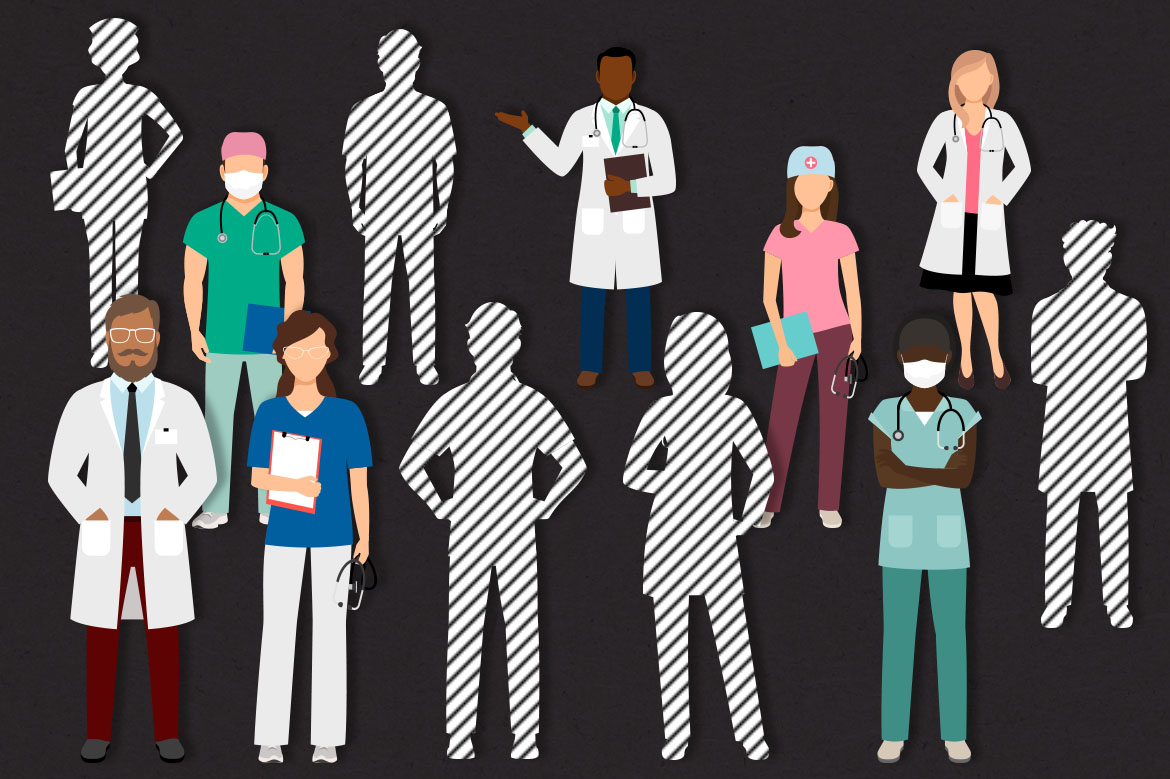DOCTOR DEFICIENCY

BY MUHAMMAD SIDDIQ – Health care debate seems to constantlydominate headlines. Many Americans, however, are unaware of a major issue affecting the United States’ healthcare system. The United States is facing a significant shortage of physicians and evidence suggests that the recent deficiency of medical professionals is only going to get worse.
The United States’ physician shortage is being fueled many factors including population growth, an increase in the number of aging Americans, and the retirement of practicing doctor. A recent study done by the Association of American Medical Colleges estimates that the United States will be in a deficit of anywhere between 40,800 and 104,900 physicians by the year 2030. The study found that primary care physicians and other medical specialists are currently unable to keep pace with demands of the growing and aging population. These demands are significant as projections suggest that the total U.S. population is expected to grow 12% by 2030. Similarly, the number of U.S. residents aged 65 and older is expected to increase 55% by that time. AAMC President Darell G. Kirch, MD. explains, “This makes the projected shortage especially troubling, since as patients get older they need two to three times as many services, mostly in specialty care, which is where the shortages are particularly severe”.
As Kirch suggests, speciality care faces the greatest demand as the projected shortage by 2030 is expected to be between 33,500 and 61,800 physicians compared to primary care’s projection of between 8,700 and 43,100 physicians. There are a number of factors that contribute to this, but it can be suggested that this is due to residency match system not producing appropriate distribution of doctors to meet patient demand. The factor affecting all specialties and having the largest effect on physician supply will be the retirement rate of current practicing doctors. In the next 10 years, more than one-third of all the current active physicians will be 65 or older.
While all evidence and projections point to a major shortage that is only growing, it is important to understand that the shortage is much more complicated than reports suggest. There are many other factors that need to be taken into consideration and several suggestions have already been proposed to avert the crisis. For one thing, much of the shortage lies in the hands of government regulation. The Association of American Medical Colleges is actively advocating for increased federal support for additional residency positions. Without this support for medical graduate education it will be difficult to increase the number of active practicing physicians. Furthermore, it will be important to see how immigration policy over the next few years affects the number of foreign physicians able to enter the country. How welcoming the U.S. is to international medical graduates will have a huge impact on the country’s physician workforce. Advancements in technology are another factor that could play a role in solving the crisis. Remote technologies such as telemedicine, which is the use of telecommunications to remote diagnose and treat patients, could reduce the need for as many specialists. Many fields such as dermatology are already using this service.
With so much uncertainty regarding the future, it is difficult to predict how short the nation will be of physicians. The physician shortage crisis is troubling to think about and there is certainly not one easy solution to the problem, but if technology advances fast enough, the government lets in foreign doctors and chooses to increase funding for physician training the increasing need for medical professionals can be alleviated.
